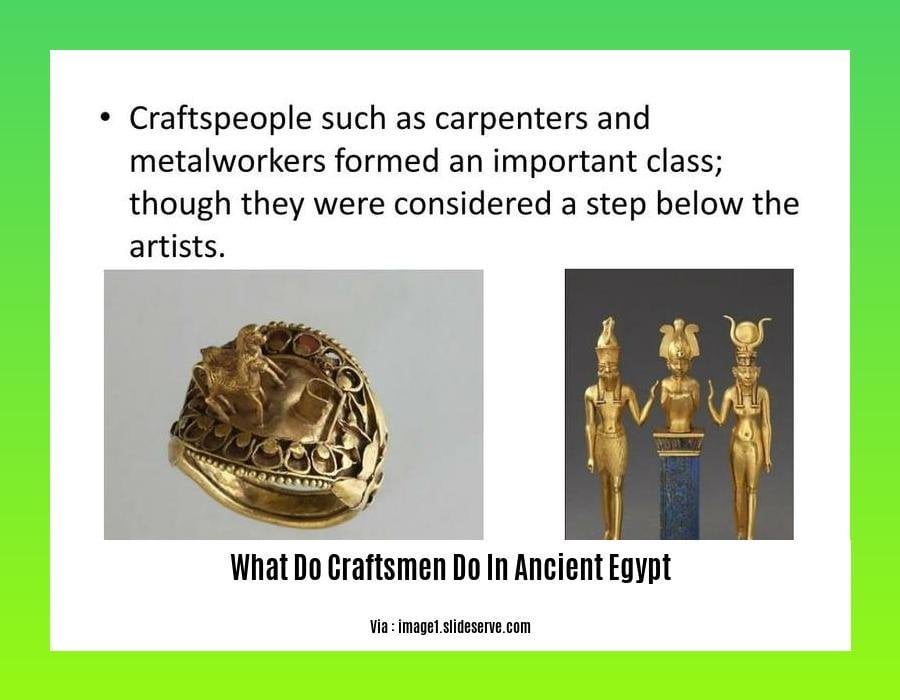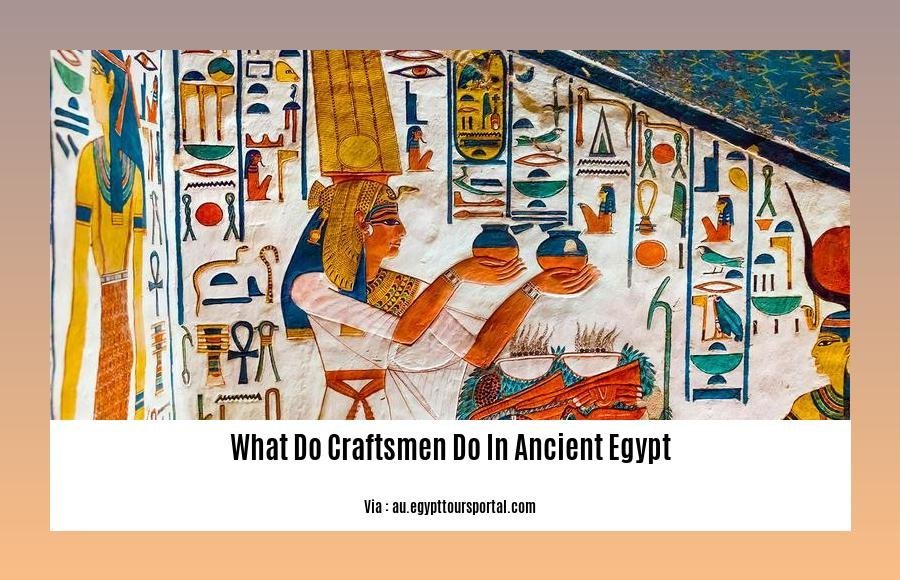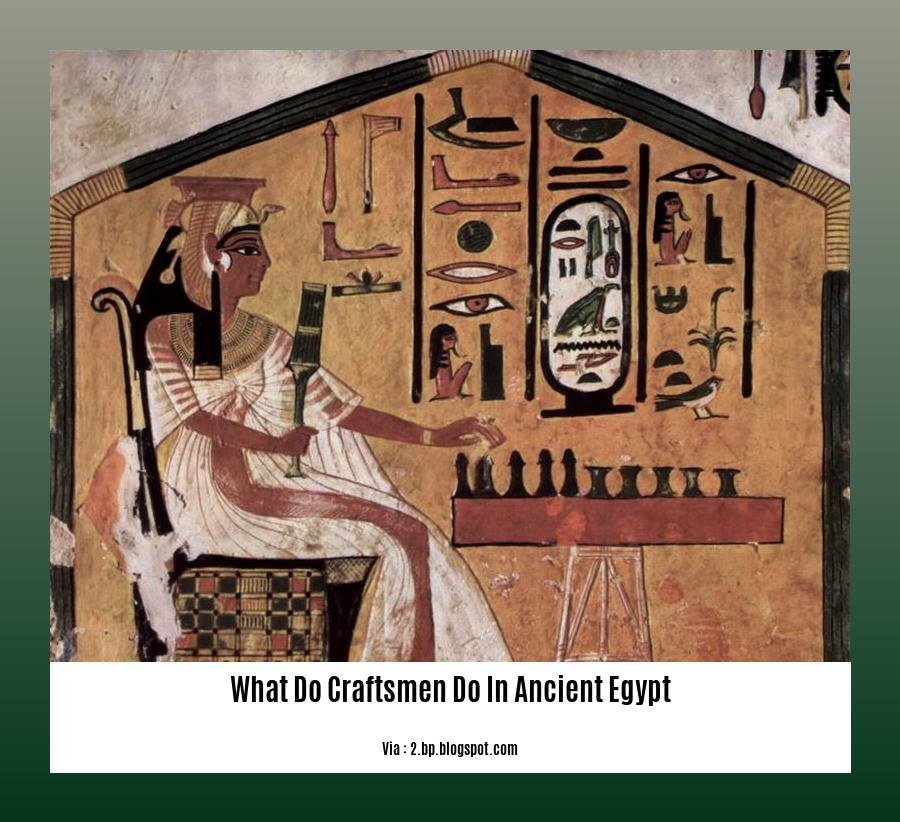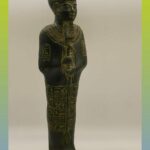Let’s take a trip back in time to ancient Egypt, where skilled craftsmen were the rockstars of their day. They weren’t just artists; they were engineers, designers, and innovators who made everything from towering pyramids to sparkling jewelry. We’re going to dive into their secret workshops, learn their tricks of the trade, and see how their creations shaped the face of ancient Egypt. Get ready for a fascinating journey into the world of these ancient masters!

What Was the Role of Craftsmen in Ancient Egypt?
In the ancient land of Egypt, where towering pyramids and enigmatic temples stood tall, there were the master craftsmen—the skilled artisans whose hands shaped the very fabric of this extraordinary civilization. They played a crucial role in every aspect of society, from constructing colossal monuments to creating exquisite art and enriching daily life.
The Builders of Empires
Imagine the colossal pyramids that still stand today, monuments to the ingenuity and skill of ancient Egyptian craftsmen. These master architects and builders developed ingenious techniques for quarrying, transporting, and assembling massive blocks of stone, creating structures that have stood the test of time.
Artists of the Divine
Beyond their architectural prowess, craftsmen were also masters of artistic expression. They adorned tombs, palaces, and temples with breathtaking wall paintings and intricate reliefs. Their vibrant depictions of gods, pharaohs, and daily life offer us a glimpse into ancient Egyptian beliefs and traditions.
Jewelers and Furniture Makers
The skilled hands of craftsmen also crafted exquisite jewelry and furniture. They fashioned elaborate necklaces, earrings, and rings, often using precious materials such as gold and lapis lazuli. Their furniture, both functional and aesthetically pleasing, featured intricate carvings and inlaid designs.
Everyday Craftsmen
But craftsmen’s talents extended far beyond royal palaces and sacred temples. They also played a vital role in everyday life, creating essential household items such as pottery, baskets, and clothing. Their skills ensured that the needs of all Egyptians, from the pharaoh to the commoner, were met.
A Legacy of Ingenuity
The legacy of ancient Egyptian craftsmen lives on beyond the monuments they built and the artifacts they created. Their techniques and artistic sensibilities continue to inspire and influence artists and designers even today. The exquisite creations of these skilled individuals serve as a testament to the extraordinary ingenuity, skill, and dedication that defined ancient Egyptian civilization.
- In ancient Egypt, craftspeople played a vital role, to know more about their work, check out what did craftsmen do in ancient Egypt.
- Curious about the bizarre weaponry of ancient China? Explore unusual ancient Chinese weapons for a captivating journey into their unique designs and fascinating history.
- Learn about the capital of ancient Egypt, a magnificent city that served as the heart of one of the world’s oldest and most advanced civilizations.
- Discover the ingenious tools in ancient Egypt, marvel at the creativity and resourcefulness of ancient Egyptians in crafting tools that facilitated their remarkable achievements.

What materials did ancient Egyptian craftsmen use?
In their workshops, ancient Egyptian craftsmen were not short on materials to work with. They used everything from stone to wood to metal, depending on what they were making.
Stone was a big one, especially for those colossal structures like the pyramids and temples that still stand today. They were particularly fond of limestone, granite, and sandstone, which they could shape with great precision.
Wood was another common material, used for everything from furniture to boats to tools. They were especially skilled at woodworking, and their pieces were often both beautiful and functional.
Clay was also widely used, for pottery, bricks, and tiles. They developed techniques for firing clay at high temperatures, which made it strong and durable.
Fibers, like linen and cotton, were woven into textiles and clothing. The ancient Egyptians were known for their fine linens, which were often used for clothing, bedding, and even sails.
Ivory was another prized material, used for intricate carvings and inlays on various objects. They were particularly skilled at carving ivory, and their pieces often featured complex designs.
Animal skins, bones, and feathers were also used, for both practical and decorative purposes. Skins were used for clothing and shelter, while bones and feathers were used for tools, jewelry, and ornaments.
Last but not least, metals were essential for jewelry, tools, and weaponry. They worked with gold, silver, copper, tin, and iron, and they developed techniques for casting, forging, and hammering these metals into a variety of shapes.
The ancient Egyptian craftsmen were truly masters of their craft. They were able to use the materials around them to create works of art that are still admired today.
What kinds of goods did ancient Egyptian craftsmen make?
Imagine yourself stepping into the bustling streets of ancient Egypt and marveling at the exquisite creations of skilled craftsmen. These artisans possessed extraordinary talents, producing an astonishing range of goods that fulfilled both practical and aesthetic needs.
One of the most notable contributions of Egyptian craftsmen was the creation of magnificent furniture. They meticulously shaped wood into elegant pieces suitable for everyday use and sacred rituals. Their furniture was adorned with captivating carvings and vibrant paintings, reflecting the rich artistic heritage of ancient Egypt.
Equally renowned was their exquisite jewelry. Egyptian craftsmen displayed their mastery in working with precious metals such as gold and silver. They ingeniously combined these materials with shimmering gemstones, creating breathtaking pieces that adorned the bodies of pharaohs and nobles alike.
Pottery was another essential craft in ancient Egypt. Craftsmen skillfully molded clay into various forms, from humble storage vessels to decorative masterpieces. They adorned these pots with intricate patterns and vibrant colors, transforming them into works of art that complemented daily life.
The grandeur of ancient Egypt is also evident in its majestic statues. These awe-inspiring sculptures depicted gods, goddesses, pharaohs, and other influential figures. Using stone, wood, and metal, craftsmen breathed life into these statues, capturing the essence of power and divinity.
Beyond these fundamental goods, Egyptian craftsmen extended their talents to a remarkable array of items. They wove intricate clothing, crafted sturdy baskets, played melodious instruments, and even created delightful toys for children. The ingenuity and artistry of these craftsmen left an enduring mark on the ancient world, solidifying Egypt’s reputation as a cultural powerhouse.
The goods crafted by ancient Egyptian artisans were not only visually stunning but also served essential functions. Their furniture provided comfort and organization, their pottery facilitated daily tasks, their statues honored deities, and their weapons protected the realm. The legacy of these skilled craftsmen lives on, inspiring awe and admiration in all who encounter their extraordinary creations.
Who were the primary clients of ancient Egyptian craftsmen?
Hey there, curious minds! Let’s dive into the world of ancient Egypt and discover who exactly kept those skilled craftsmen busy.
Temples: The Hub of Divine Design
Temples weren’t just places of worship; they were bustling centers of art and craftsmanship. Here, artisans worked tirelessly to create stunning religious artifacts that adorned the sacred halls. From towering cult statues to intricate temple decorations, they transformed divine visions into tangible wonders.
Government Officials and Elite Families: Flaunting Power and Wealth
Wealthy officials and elite families yearned to flaunt their status through exquisite commissions. They engaged craftsmen to create opulent jewelry, luxurious furniture fit for palaces, and elaborate tombs that served as eternal homes. These bespoke creations showcased their power and influence.
Middle Class: Not to Be Outdone
Contrary to popular belief, even the middle class in ancient Egypt had a taste for craftsmanship. They commissioned household goods that were one step above the ordinary. Pottery, furniture, and jewelry became their prized possessions, reflecting their growing prosperity.
Foreign Dignitaries: Diplomacy Through Craftsmanship
Egypt’s far-reaching diplomatic relations opened up new opportunities for craftsmen. Foreign dignitaries couldn’t resist Egyptian craftsmanship, and commissioned exquisite gifts and luxury items. These creations became symbols of amity and strengthened diplomatic bonds.
Key Points:
- The clientele of ancient Egyptian craftsmen was diverse, spanning across societal groups.
- Temples and religious institutions sought their expertise for sacred artifacts.
- Government officials and elite families commissioned bespoke items to flaunt their wealth and status.
- The middle class also patronized craftsmen for finer household goods.
- Foreign dignitaries received Egyptian craftsmanship as diplomatic gifts or through trade.
FAQ
Q1: What were the roles of craftsmen in ancient Egypt?
A1: Craftsmen played a pivotal role in ancient Egyptian society, creating intricate art and architecture. They specialized in various crafts, including toy-making, animal engravings, painting, and artwork. They were also responsible for constructing furniture, statues, stone vessels, pottery, and jewelry.
Q2: Who were the patrons of ancient Egyptian craftsmen?
A2: The clientele of ancient Egyptian craftsmen primarily consisted of nobility and the wealthy middle class. These individuals commissioned works of art and architecture to decorate their homes, temples, and tombs.
Q3: What factors contributed to the flourishing of craftsmen in ancient Egypt?
A3: The thriving economy and trade of ancient Egypt contributed to the flourishing of craftsmen. The availability of resources and the demand for luxury goods created a favorable environment for skilled artisans to develop their talents.
Q4: How did the work of craftsmen provide insights into ancient Egyptian society?
A4: The work of craftsmen provides insights into the lives, beliefs, and values of ancient Egyptians. Their art and architecture often depicted scenes from everyday life, religious rituals, and historical events. By studying these works, historians can gain a better understanding of the ancient Egyptian culture.
Q5: What is the legacy of ancient Egyptian craftsmen?
A5: The legacy of ancient Egyptian craftsmen continues to inspire and fascinate people today. Their exceptional skills and artistry are evident in the enduring monuments, artifacts, and art that have survived to this day. Their work serves as a testament to the ingenuity and creativity of the ancient Egyptian civilization.
- Unveiling the Enigma: Mansoureh Khojasteh Bagherzadeh’s Public Appearances & Private Life in Iran - July 18, 2025
- Unveiling the Mystery: Mansoureh Khojasteh Bagherzadeh’s Husband: A Rare Glimpse into a Private Life - July 18, 2025
- Unveiling Masoud Khamenei’s Mother: Power, Influence, and Iran’s Future - July 18, 2025
















